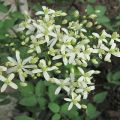Description of Crocus Rose varieties, planting and care features
Crocus Rose is an attractive ornamental plant that is actively used in landscape design. To succeed in growing a crop, you need to provide it with complete and high-quality care. To do this, it is worthwhile to water the plant in a timely manner, apply fertilizers and prune. You should definitely protect the bush from diseases and parasites.
Origin story
The rose of this variety owes its appearance to the British breeder David Austin, who is professionally engaged in the cultivation of these plants. In 1969, the scientist created his own company and began to breed new cultures.
White rose Crocus Rose appeared in 2000. It was created based on the Golden Celebration variety. The culture got its name in honor of The Crocus Trust Cancer Foundation.
Description and characteristics of the rose Crocus Rose
This plant is a semi-leafy rose that reaches 120 centimeters in height. The width of the bush is no more than 90 centimeters. The culture is characterized by semi-glossy leaves, which have a rich dark green color.
Initially, the plant was classified as a white variety. However, it later became clear that a white tint appears only at the final stage of flowering. Until the bud is opened, it has an apricot or peach hue. As it blooms, the flower takes on a pure white color, while the core remains the same color.
The flower is small. Its diameter does not exceed 8 centimeters. Inflorescences are considered strongly double. They form brushes, and therefore the bush is evenly covered with flowers. They are characterized by a rich scent of tea roses and continuous flowering.
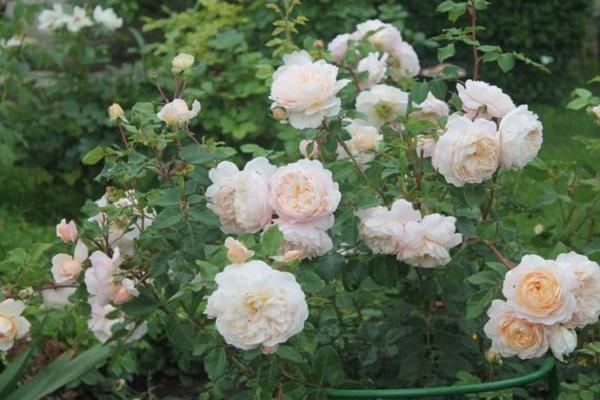
Pros and cons of the variety
This park rose has many advantages:
- beautiful double flowers;
- harmonious bush shape;
- cup-shaped flowers;
- constant flowering.
The key disadvantage of culture is susceptibility to disease. Rose of this variety is susceptible to powdery mildew, therefore it needs to be treated with special means.

How to grow a rose?
To succeed in growing a crop, it is worth planting correctly.
Optimal location
This plant requires a sunny spot. At the same time, the culture hardly tolerates hot weather. There should be no trees or bushes nearby, as they can drown out the plant's root system. Also, the rose will be deficient in nutrients.
When choosing a location, it is worth considering the level of the groundwater. If they are close to the surface, the flower can quickly wither away. It is not recommended to plant the rose in low places, which are characterized by stagnant air. To achieve the normal development of culture, full air circulation is required. In this case, drafts should be avoided.

For a rose of this variety, loamy soil or black soil is suitable. It is important to monitor the acidity parameters. They should be 6-6.5.
With a low acidity, the introduction of manure or peat is required, with increased rates, wood ash is used.
Preparation of planting material
Before planting, seedlings need special preparation. At this stage, their roots should be immersed in a mixture of soil and water for 10-20 minutes.
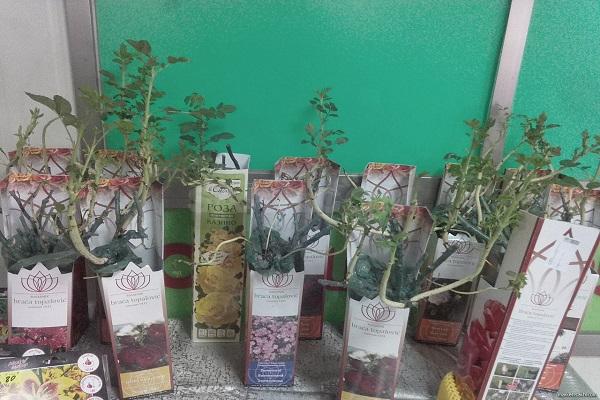
How to plant?
The flower can be planted in spring or fall. Better to do it in the fall. This will provide better rooting and help to achieve flowering in spring. When planting in autumn, the bush must be spud.
The rose pit must be at least 70 centimeters deep. At the bottom, it is worth laying a drainage layer - for example, from expanded clay. It is also recommended to add compost or humus into the recess. It is also permissible to use fertilizers.
It is worth pouring garden soil on top. Then immerse the bush in the hole. It is important to ensure that the neck is 3 centimeters below ground level. Sprinkle the plant on top with earth and water it well.
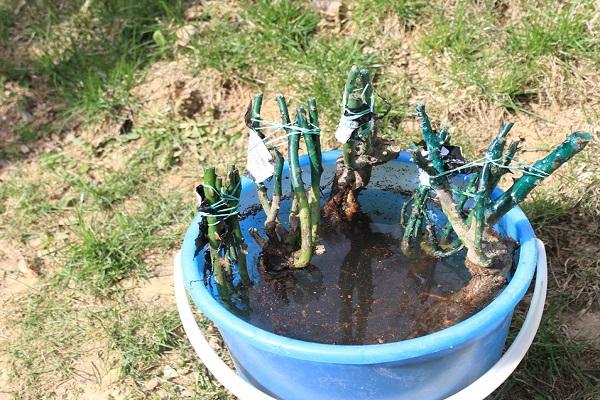
Flower Care Tips
For a culture to grow and develop normally, it needs to provide complete and quality care.
Watering and fertilizing
This variety is characterized by resistance to moisture. But this applies to rains. Water the bush should be moderate. In high humidity, the stems begin to dry out. It is best to moisten the soil once a week. In heat and drought, this can be done at intervals of 3-4 days.
The plant should be fed once a season. In the spring, it is recommended to apply fertilizers with a nitrogen content, and in the summer - products based on potassium and phosphorus.
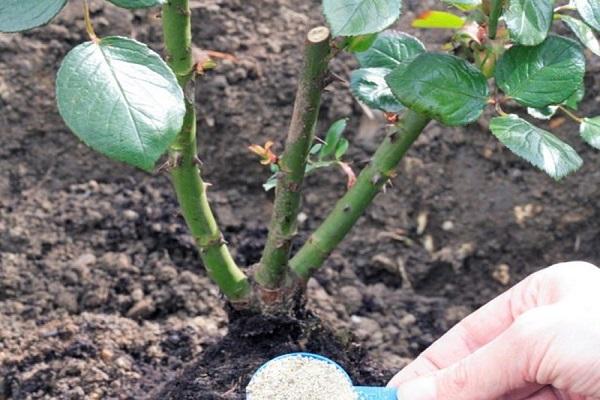
Pruning and wintering
It is worth removing flowers from young plants of the first year of life until August. This is required for the full rooting of the plant. Leave a few flowers for the fall. This will ensure quality flowering of the bush next year.
Adult crops need regular pruning. The procedure is carried out in spring and autumn. When the first buds appear, it is worth removing the dead stems and giving the culture the desired shape.
In the fall, it is recommended to get rid of diseased branches to avoid spreading the infection to the entire bush.
Crocus Rose is considered a frost-resistant plant. But when frosts are less than -7 degrees, the culture should be covered. To do this, sprinkle the roots and sprinkle them with dry leaves or sawdust. It is also permissible to use spruce branches.

Then a wire frame is made around the plant. It should be 20-30 centimeters above the crop. From above, the frame should be covered with a mulching cloth or special insulating material. After that, it is recommended to lay a layer of film. In March-April, the insulation should be gradually turned away.
Disease and Pest Control Rules
This rose variety is highly resistant to major diseases and pests. At the same time, it is characterized by medium resistance to powdery mildew. This fungal infection causes damage to branches, buds, leaves and is accompanied by the formation of a white bloom.
With severe damage, there is a risk of twisting and falling off the buds. The affected bush is sprayed with Fitosporin-M, copper sulfate or Fundazol. For prevention, it is worth using an infusion of nettle.

Reproduction
Culture can be propagated in different ways. This enables every gardener to choose the appropriate option.
Cuttings
You can use cuttings to breed a plant.To do this, in the summer, cut off young branches and divide into fragments with 2-3 leaves on each. Make an oblique incision in the lower kidney area.
Soak in growth stimulator for 30 minutes before planting. Then place in moist and loose soil and place a plastic bottle on top. Cuttings take root after about 1 month.
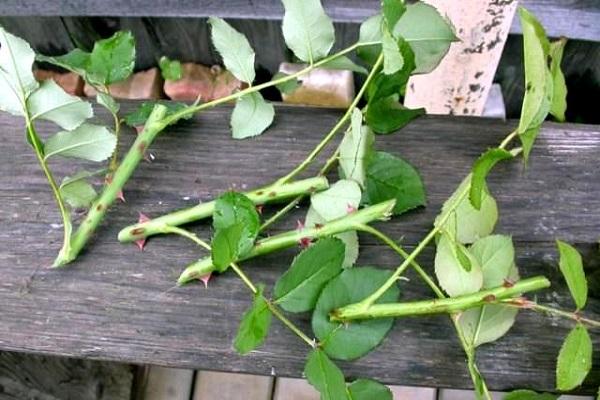
By dividing the bush
The procedure should be carried out in the fall or spring. To do this, it is recommended to dig up the mother plant and divide the rhizome into fragments. They should be planted in open ground. After a year, the plant will bloom.
Scion of roots
Root offspring are aerial shoots. For reproduction near them, it is worth removing the ground and cutting off the root that connects the branch to the mother bush. Then move to a permanent place.
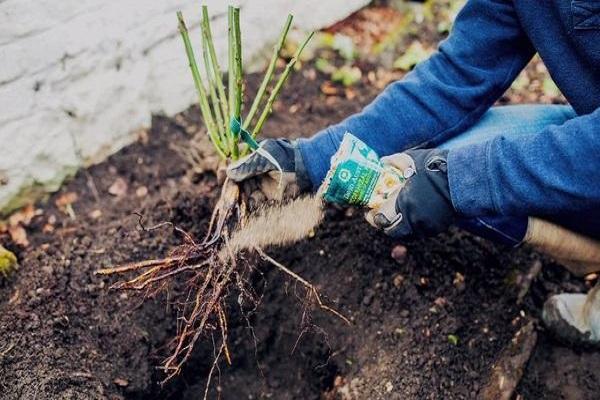
Application in garden design
Bushes of this variety are often used to decorate mixborders. Crocus Rose roses may well become the basis of a flower garden. They look great in single or group plantings. Also, bushes are often used to create a hedge.
Roses Crocus Rose are distinguished by excellent decorative qualities. They are often used in landscape design and are considered unpretentious to maintain. At the same time, it is important to take care of protecting the bushes from powdery mildew.



